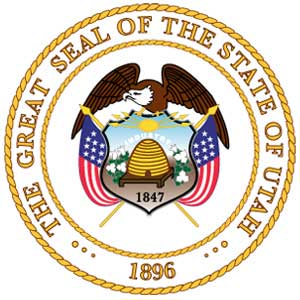Let us stipulate that when it comes to marriage, the situation in Utah is pretty confusing.
Thirteen hundred or so gay and lesbian couples got hitched in the Beehive State after a federal judge ruled last month that the state’s law against same-sex marriage was unconstitutional. Then, after the U.S. Supreme Court stayed the ruling until the appeals process was over, county clerks stopped issuing the marriage licenses but last Thursday were told by Attorney General Sean D. Reyes to mail out certificates to those same-sex couples whose marriages were already “solemnized” — even though the state “cannot currently legally recognize marriages other than those between a man and a woman.”
Benefits accruing to marriage in Utah will be provided to those married same-sex couples who had already applied for them, but only to them; however, the state’s assumption seems to be that other jurisdictions might recognize the marriages as valid and provide their own benefits. Which, on Friday, U.S. Attorney General Eric Holder announced the federal government would do. When it comes to marriage in Utah, “recognition” is a murky thing.
But I have faith that Utahns, a friendly and resourceful people, will be able to deal with this. History suggests as much.
You’ll recall that a century and a half ago, their marital regime was somewhat unconventional. Then, as now, the bulk of the citizenry belonged to the Church of Jesus Christ of Latter-day Saints, one of whose principal tenets was Plural Marriage, a way of tying the knot for time and eternity between a man and more than one wife.
The feds didn’t much care for this practice, and since Utah was then a federal territory, they spent a good deal of time and effort passing laws against it. Problem was, the prosecutors and judges and juries tended to be Mormons, and they were disinclined to enforce the laws. Their feeling was that the First Amendment guaranteed them a right to freely exercise their religion in ways that went beyond worship and belief.
Unfortunately for them, the Supreme Court decided in 1878 that the Free Exercise Clause did not protect Plural Marriage, but this did not keep the Mormons from sticking to their polygamous guns, even though it put them at increasing risk of landing in the federal pen. Even after 1890, when their president, Wilford Woodruff, issued a manifesto announcing the end of the practice, church leaders continued to maintain connubial relations with their plural wives, and for a time to solemnize new plural marriages.
“I remember Pres. Woodruff saying that the Manifesto would never apply to our living with our wives, and he would see them damned and in hell before he would agree to cease living with his wives or advise any other person to do so,” future LDS president Heber J. Grant confided to another Mormon leader In 1892. Grant felt “that if we had taken the manly stand and had said we will continue to live with and honor our present wives but will cease marrying in the future, we would have fared better.” That viewpoint perhaps sheds some light on the attorney general’s decision to let married same-sex couples keep the benefits they’ve already obtained.
I figure the polygamy precedent is on Utahns’ minds these days, what with last month’s ruling by U.S. District Judge Clark Waddoups that the state’s anti-polygamy law is unconstitutional and the LDS Church’s frank new statement on the subject. So I wouldn’t wouldn’t worry about their ability to handle the current SSM confusion. They’ve been there before.






